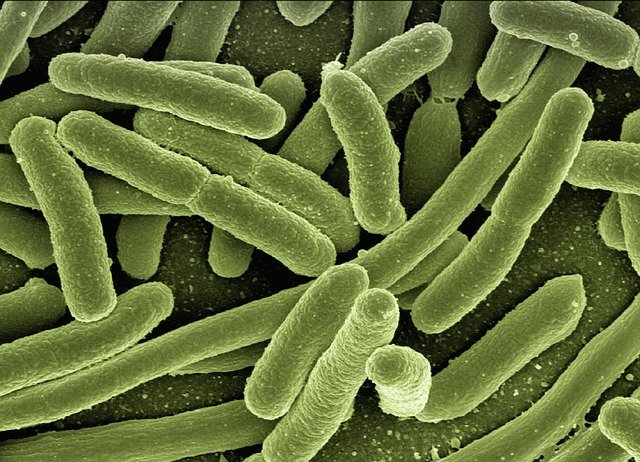Pathogenic microorganisms Part I - Know Your Enemy so You Can Defeat it!
''I don't feel so well, I think I have a flu. I must start taking antibiotics.''

If I had a dollar for each time I heard someone saying this...
When pathogens invade and multiply in our body, a response of our organism to disease-causing microorganisms is called an infection. Sure, that's something we all know, because all of us have experienced at least once in our lives symptoms like high fever, coughing, sneezing, etc. But what is the difference between whooping cough and common cold? Or between tuberculosis and flu?
The difference is huge, because they are caused by different forms of pathogens, and should be treated differently!
In the series of post starting with this one, I will discuss about different forms of pathogenic microorganisms and diseases they cause, with the main goal of clearing up the most common misconceptions about infectious diseases and appropriate treatments.
Types of pathogenic microorganisms
Lets see first what are the types of pathogens that exist and that can attack our body:
- Bacteria
- Chlamydiae
- Rickettsiae and Ehrlichiae
- Mycoplasma
- Viruses
- Fungi
In this post I will discuss basic differences between bacteria and viruses, the two most often infection-causing pathogens, and in the texts to come each of the pathogen categories will be discussed in more detail.
Bacteria vs. viruses
Bacteria are single-celled, prokaryotic microorganisms that thrive in a great diversity of living environments, such as living hosts and all areas of planet (ocean, soil, etc.). Bacterial cells have cell membrane and cell wall and their DNA is floating freely in cytoplasm (they have no nucleus). Bacteria usually reproduce asexually, by binary fission, where a single cell divides into two identical daughter cells. They come in large number of shapes and sizes, ranging from 0.5–5.0 micrometers (μm) in length.

Interestingly, only a small percentage of existing bacteria are pathogenic, while most are beneficial or harmless for us (for example, bacteria which are a part of the normal flora of the body and are beneficial to maintaining certain body processes).
Unlike bacteria, viruses are acellular (have no cell structure) infectious agents that replicate only inside the living cells of other organisms. There are still many opposing opinions on whether viruses represent a life form, or they are just organic structures interacting with their hosts.

Viruses consist of a DNA or RNA carrying genetic information that are encapsulated within a protein coat. They invade a host cell and use their replication machinery to make copies of the viral DNA/RNA. When large number of new viral particles are created within the host cell, they destroy it releasing new viruses. Like bacteria, viruses come in different shapes and sizes, but are significantly smaller than bacteria - 20 - 400 nm in size!
There are no known beneficial interactions of viruses with hosts, although they can be useful in genetic engineering.
Bacterial vs. viral infections
It is easy to conclude from the names - bacteria cause bacterial, whilst viruses cause viral infections.

However, it can be difficult to tell the difference between them, because viral and bacterial infections can cause similar symptoms.
Examples of bacterial infections include whooping cough, strep throat, tuberculosis, ear infection and urinary tract infection (UTI), while some of the viral infections include the common cold, flu, most coughs and bronchitis, chickenpox and HIV/AIDS.
Bacterial infections are usually treated with antibiotics, products of other microorganisms (such as fungi and other bacteria), that kill or inhibit the growth of most bacteria (with the exception of most Gram-negative bacteria).
Now, this may come as a surprise, but for most viral infections such as common cold, flu - there is no treatment! All that can be treated are symptoms (high fever, cough, etc.) but not the infection itself. Once the virus invades host cells, all you can do is wait for your immune system to do all the work, take lots of fluids and rest. Disappointing, isn't it?
Important - antibiotics DO NOT WORK against viral infections!!! Besides causing altering of gut flora, misuse of antibiotics can contribute to a rise in bacterial resistance. So please, before trying to prescribe any medication (including antibiotics) to yourself, consult a medical doctor who can determine whether and what medications you should or should not take.
For more serious viral infections, like smallpox, polio, measles, hepatitis, etc., prevention of spreading of disease is performed by vaccination. For viral infections such as HIV/AIDS antiviral medicines that prevent viral replication are used.
In the Part II of Pathogenic microorganisms I will write in more detail about pathogenic bacteria, infections they cause and available treatments.
Until then, relax and keep steemSTEM! ;)
Literature
Bacterial pathogens: from natural ecosystems to human hosts
The evolving history of influenza viruses and influenza vaccines
From empiricism to rational design: a personal perspective of the evolution of vaccine development
Differences between bacterial and viral infection
Pictures taken from pixabay.com
For more scientific-related content check steemSTEM. Follow me if you like my posts and want to read some more ;) If you have any thoughts/suggestions fell free to leave a comment!

Full upvote from me for "steemSTEM cells" alone. Lovely post!
Thank you so much for your support! :)
@originalworks